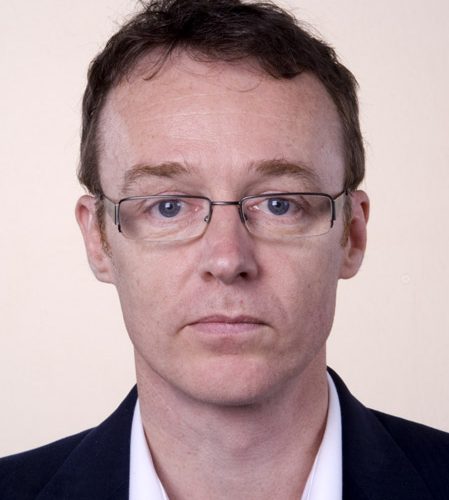The International Committee of the Red Cross launches the first Humanitarian Impact Bond
Established in 1863, the International Committee of the Red Cross (ICRC) operates worldwide, helping people affected by conflict and armed violence and promoting the laws that protect victims of war
21 September 2016

Established in 1863, the International Committee of the Red Cross (ICRC) operates worldwide, helping people affected by conflict and armed violence and promoting the laws that protect victims of war. An independent and neutral organization, its mandate stems essentially from the Geneva Conventions of 1949. The ICRC is based in Geneva, Switzerland, and employs some 14,500 people in more than 80 countries. The ICRC is funded mainly by voluntary donations from governments and from national Red Cross and Red Crescent Societies.
Last January, at the World Economic Forum in Davos, ICRC’s President Peter Maurer launched the Humanitarian Impact Bond (HIB), a project implemented by a group lead by Christopher Greenwood Head of Leadership Giving. Today we have the chance to speak about this project directly with Christopher.
Christopher, first of all congratulations for this interesting project. How did the idea come to life?
The idea was born following the success of the International Finance Facility for Immunization (link www.iffim.org) that uses long-term pledges from donor governments to sell ‘vaccine bonds’ in the capital markets, making large volumes of funds immediately available. IFFIm benefits from US$ 6.5 billion in donor contributions over 23 years from the governments of the United Kingdom, France, Italy, Norway, Australia, Spain, The Netherlands, Sweden and South Africa. This project is a very important model for the other big international charitable Organizations, first of all for the ICRC.
The ICRC is renovating his own financial sustainability model, giving an important place to the social finance. How did this process start?
The ICRC started to investigate this new possible source of funds 5 years ago. When I joined the team, around 4 years ago, we decided to turn this activity in a systematically action, looking for international best practices and inspiring models. Among the different possibilities given by social finance, the Social Impact Bond seemed a quite simple mechanism to understand and scale up and we decided to focus our studies on this. This Humanitarian Impact Bond is a first pilot for the ICRC and now that it has been launched, we are already at work again to study the other financial innovations in order to be able to test other products in the next few years: the dedicated team is growing and we have built a strong network of professional volunteers from the finance and legal sector, that are helping us in this challenge.
Can you explain the idea and the mechanism of the Humanitarian Impact Bond (HIB)?
The HIB has the aim to collect moneys to allow ICRC to improve his health programs in fragile and conflict affected countries, particularly building infrastructures for the physical rehabilitation sector. The financial performance of the bond is tied to the performance of the ICRC in achieving these objectives.
There are three partners involved in the bond:
- the ICRC, which runs the activities that underpin the bond;
- the social investors, who advance money for the ICRC activities;
- the outcome funders, who will pay the investors back for the activities the ICRC has delivered.
The HIB will operate for five years, at the end of which the outcome funders will pay back the social investors their investment partially, in full or with an additional return, depending on how well the ICRC performs.
And how is the money collecting process going on?
The HIB needs to raise at least 35 million dollars to be created, but before to talk with the Social Investors we need to have the pledge of the Outcome funders in order to give guarantees.
We have a signed letter of intent from the government of Belgium and another one from La Caixa Foundation in Spain and commitments from Australia, Swiss and Netherlands’ governments.
We have already collected 25 million Suisse francs of pledges and we expect to start the official talks with the investors in October.
Who exactly are the Social Investors? And the Outcome funders?
Social Investors in the bond can be any private wealthy individual, social entrepreneur or investment fund that is interested in investment opportunities that combine social and financial returns, and is confident in the ICRC’s capability to undertake the activities defined in the bond. Since the return on investment of the HIB is based on how well the ICRC delivers, their investment will also be less susceptible to global market volatility. For the moment there isn’t a minimum size to participate in the project.
The outcome funders are foundations, government institutions or non-governmental organizations that are interested in funding health infrastructure in fragile or conflict-affected countries where the ICRC operates, but are concerned about the challenges and risks linked to such activities, in particular: fraud, challenges in negotiating with unstable or weak governments, challenges of securing building materials, or the risk of destruction owing to armed conflict.
For outcome funders, the value of the HIB is twofold:
- the money for the activities included in the bond is advanced by the investors;
- at the end of the HIB’s term, the outcome funders only pay for what was effectively delivered;
any potential losses are borne by the social investor.

